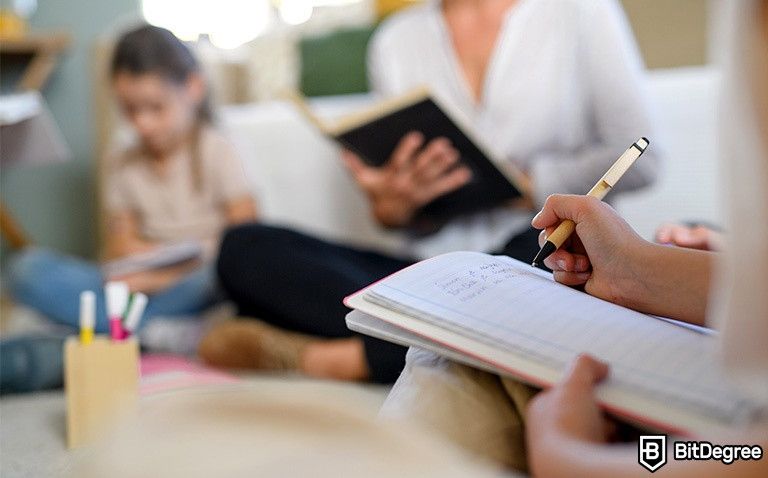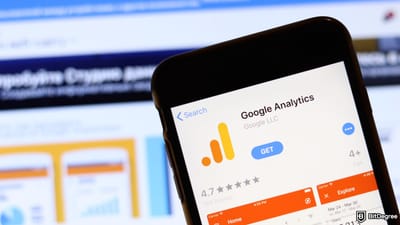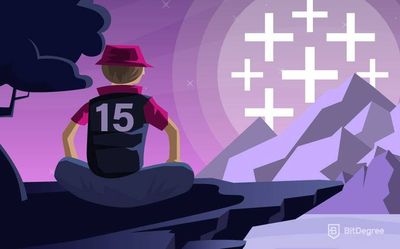Stop overpaying - start transferring money with Ogvio. Sign up, invite friends & grab Rewards now! 🎁
Homeschooling has been gaining more and more popularity in recent years. Parents across the world want to know how to homeschool their children and choose this path instead of a more traditional school education.
The COVID-19 pandemic has been a big push for shifting to home teaching. There have been debates whether distance learning was a good strategy compared to homeschooling.
But what does it take to make such a decision? What resources does teaching at home require? Where do you find out how to start homeschooling in the first place?
In this article, we’ll take a look at how this method varies across the world. We’ll also see what makes homeschooling and distance learning differ and list some of the homeschooling pros and cons.
Read along to learn the three key steps you should bear in mind when you plan to start homeschooling. We’ll also recommend some great online resources to use that will help you on your homeschooling journey.
Table of Contents
- 1. How to Homeschool — The Concept
- 2. Homeschooling vs. Distance Learning — What’s the Difference?
- 3. Homeschooling Pros and Cons
- 4. The Stepping Stones
- 4.1. Step One – Check the Laws
- 4.2. Step Two – Communicate with the Child
- 4.3. Step Three – Find Materials
- 5. Motivating Gen Z Learners: What Parents and Teachers Need to Know (Enroll Here)
- 6. Ultimate English Homeschooling: Primary School Curriculum (Enroll Here)
- 7. Introduction to Programming Nanocourse (Enroll Here)
- 8. Foundations for Transforming Teaching and Learning about Native Americans (Enroll Here)
- 9. 24+ Hours of Piano Lessons, Homework & Tests (Enroll Here)
- 10. Conclusions
How to Homeschool — The Concept
Before we can look into how homeschooling works, we need to figure out what it means. So, what is homeschooling exactly?
Latest DataCamp Coupon Found:Homeschooling is a way of learning outside of an institution. This usually means learning individually at home or in small groups. It’s a pretty broad term for a very flexible method.
This way of learning was popularized in the USA in the late 20th century. However, there are parents all over the world[1] curious about how to start homeschooling their children. This has become more popular during the COVID-19 pandemic.

Parents have different reasons to start homeschooling their children. Some do it for convenience and accessibility. Others look into how to homeschool because the official curriculum doesn’t meet their expectations.
There are several different ways of homeschooling. In some cases, a child is taught by their parents either alone or with their siblings. This is the most typical model of homeschooling.
It might seem that homeschooling is very isolating, but that doesn’t have to be the case. There are formal and informal ways for homeschooled kids and their families to connect with each other.
Often people form homeschooling communities. These can be Facebook groups, community apps, or in-person meetings. Some families may decide it’s better to teach their children together — all while staying outside the school system.
A particular type of homeschooling communities appeared during the COVID-19 pandemic. Pandemic pods formed as small learning groups to help children socialize during the lockdowns.

Pandemic pods, or microschools, answer the question of how to homeschool without losing the social aspect. Parents form pods with their friends and colleagues where their kids can learn together. Pods can be flexible – you can learn at home, in the park, or even in office spaces.
While kids in microschools are taught by qualified teachers, they don’t have to follow the strict program of institutional schools. Teachers can create their own learning plans and switch them around as they wish.
One of the most outstanding features of homeschooling is just how flexible it is. You don’t just have to be stuck with one model. For example, you can be homeschooling online on some days and exploring the world around you the next. You set your own schedule and choose where you want to teach.
Since schools started moving to a digital learning model, some parents have decided that simply homeschooling their children would be more convenient. This phenomenon made people wonder — what exactly is the difference between home teaching and institutional schools?
Homeschooling vs. Distance Learning — What’s the Difference?
At the start of the COVID-19 pandemic, many schools had to move their teaching from classrooms to pupils’ homes. Classes would take in bedrooms and kitchens. Instead of lively classrooms, lessons would happen over video conferencing platforms.
And that’s basically what homeschooling is. Isn’t it?
Not quite. Learning at home is about where the similarities between homeschooling and distance learning end. It’s different in almost every aspect – from where it takes place to how.
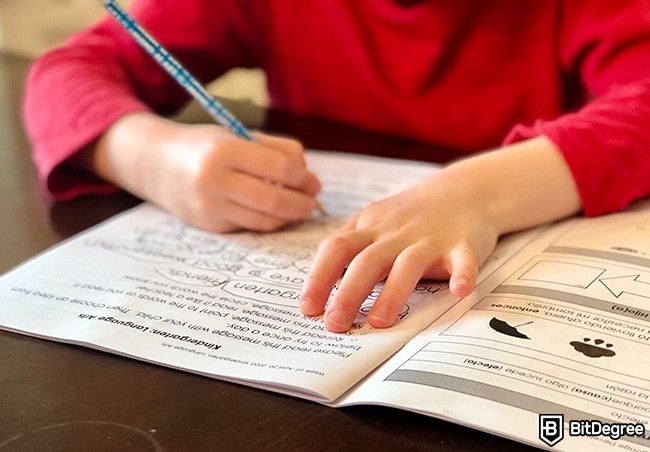
There’s actually a term for learning from home during the pandemic. It’s “crisis schooling”. Although you’ll see “distance learning” more often, “crisis schooling” is used to talk specifically about learning during COVID lockdowns.
Pupils who are distance learning are still enrolled in a school. They follow the official curriculum as they would in a physical classroom. The only difference from traditional education is that it takes place online[2].
Homeschooling takes place outside of the traditional school system. It can involve digital tools, but it’s not necessary. Often the structure of how to homeschool the child is set by the parents. However, in some places, the state can have a word in what the kids are learning.
During the pandemic, homeschooled kids seemed to adjust to the new normal faster than the kids in schools. The former already had a structure of their individual learning. The kids in schools had to adjust to moving their daily schedule to their phones or computers.
Even if they were homeschooling online, kids did not have the same experiences as those who had to switch to digital learning. There was still more flexibility and fewer restrictions.
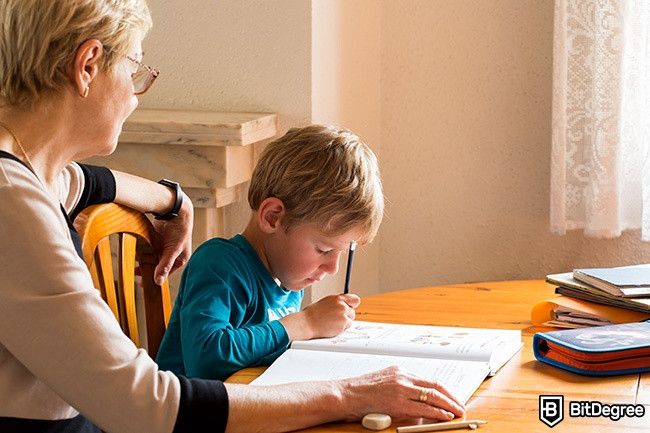
In fact, thanks to the pandemic, there has been a shift towards more parents pulling their kids out of the school system and choosing to homeschool instead. There are several reasons for this.
Some parents found that they preferred teaching their children by themselves rather than following the curriculum. Others noted that their kids were happier and not as stressed at home. It was decided that it'd be better for their mental health to start home teaching full time.
Homeschooling has also been easier for children with disabilities. Some schools do not have enough resources to accommodate their needs, and the home environment can be safer.
So, as you can see, the answer to the question “what is homeschooling” isn’t simply “distance learning on your own”. There are more things to keep in mind – especially if you’re considering switching from one to the other.
Homeschooling Pros and Cons
When it comes to making the final decision of switching to home teaching, you need to weigh the possible advantages and disadvantages. How does homeschooling compare to institutional learning? What would benefit the child more?
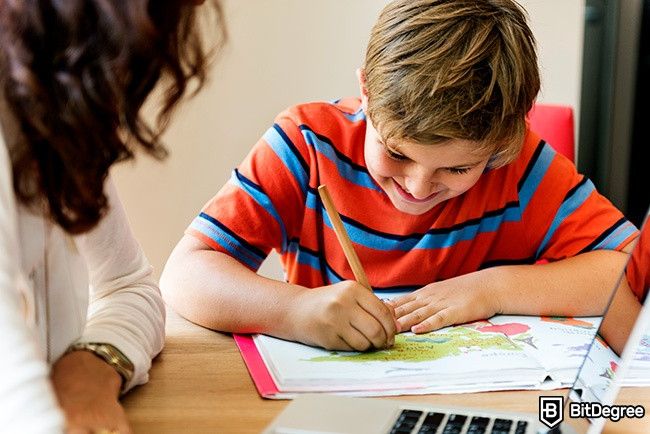
This way of learning isn’t one-size-fits-all. You need to consider your—and especially your child’s—needs first. So, let’s take a look at some of the homeschooling pros and cons.
For starters, you can curate the classes entirely according to the child’s needs. Perhaps their reading level was above their age group. If something is easy, there’s no need to spend time focusing on it just because the study plan demands it. You can spend that time working on more difficult subjects instead.
You can also adjust the learning pace. You don’t have to stick to the usual Monday-Friday structure. Perhaps you want to spend the first half of Saturday studying and have Tuesdays off. You set the schedule — unless local requirements state otherwise.
Homeschooling has advantages for children with cognitive and physical disabilities. If a school lacks accessibility resources, it may be a safer choice to teach a child at home. You can use tools and strategies that make learning more comfortable and accessible.
There are long-term benefits[3] as well. Once they get into college, homeschooled children tend to be more confident and self-sufficient. They appear to be less depressed or self-conscious.

Of course, there are some downsides to home teaching. It can impact a child’s social skills. While at school, children interact with each other and form friendships. This can be harder to do for homeschooled children.
Similarly, there can be almost no opportunities for group projects. Unless the child studies in a pod, it’ll be a one-on-one learning experience most of the time. This can be intensive, as there is no one else to discuss or study with.
Traditional schools are usually full of variety. Different teachers have different methods. When it’s just you and your child, it can be easy for learning to get monotonous. As you teach at home, you’ll develop your patterns. And these patterns can get boring after a while.
However, it can also be easy to lose a sense of routine. While the flexibility is nice, a lack of structure can be confusing. It can be harder to stay motivated when there’s nothing specific to commit to.
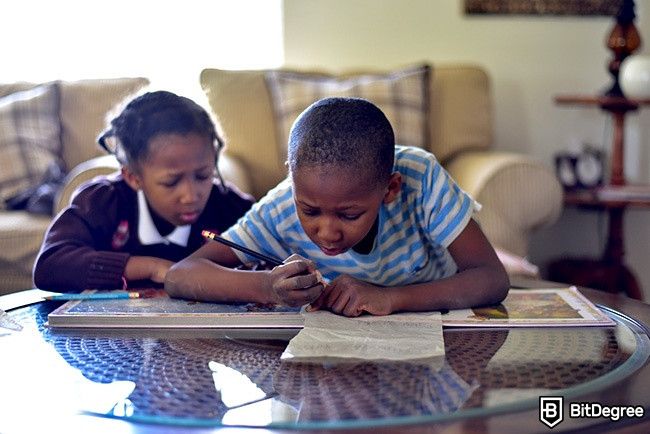
Homeschooling pros and cons are necessary to keep in mind when you’re preparing for it. Nearly all the downsides can be accommodated. And the benefits reveal just how easy it is to find a way of teaching that meets your needs.
At the end of the day, whether the negatives outweigh the positives, it’s your decision.
The Stepping Stones
So, you’ve decided that homeschooling is the right choice for you. Now you’re wondering how to start homeschooling your child. Who to contact, where to get supplies, how to brush up on your own knowledge...
This isn’t really a change that happens overnight. You need to plan ahead and create a strategy. Most importantly, there are three aspects to keep in mind — the legality of homeschooling in your area, the needs of the child, and the materials you’ll need.
Step One – Check the Laws
Choosing to homeschool is not a one-and-done deal. Rules vary from country to country and, in the USA, even from state to state. Some places in the world are pretty lax when it comes to homeschooling. In other countries, it’s completely banned.
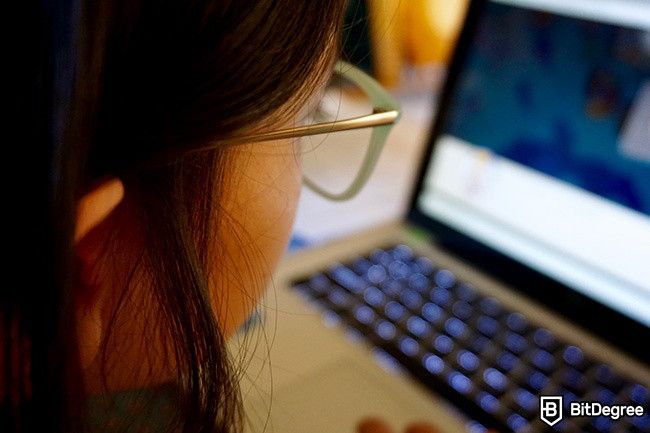
If you want to know how to homeschool properly, check your local laws first. You have to see if it’s possible first.
For example, it’s pretty simple to homeschool in Texas. The local government doesn’t have a lot of requirements. The State of New York, on the other hand, requires a list of documents to be submitted annually to make sure children are receiving good quality education at home.
There’s no single international approach to homeschooling either. For example, in Ireland, the right to homeschool is even written in the Constitution. On the other hand, it’s banned and punishable by law in Germany.
So, know your law and do things by the rulebook.
Step Two – Communicate with the Child
Once you’ve made sure that you can choose a new learning model legally, you have to decide how to homeschool your child. After all, this is all for their wellbeing.
Often parents choose to homeschool their children because they think the school system is not meeting their expectations. This means that they have to meet these expectations themselves.
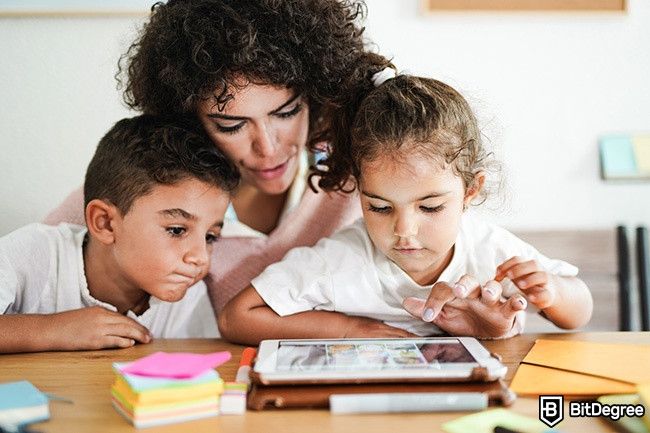
You need to figure out what works best for your child. There are four types of learners – visual, auditory, kinesthetic, and reading/writing. Keep these in mind as you watch your child learn.
Do they find it easier to learn when they move around? Do they prefer writing down notes or reading out loud? By simply watching your child study, you’ll learn how to make homeschooling easier for them.
It can be a work in progress. You don’t have to stick to the same learning style. If you and your child see that something works better for you, switch things around.

- Easy to use with a learn-by-doing approach
- Offers quality content
- Gamified in-browser coding experience
- Free certificates of completion
- Focused on data science skills
- Flexible learning timetable

- High-quality courses
- Nanodegree programs
- Student Career services
- Nanodegree programs
- Suitable for enterprises
- Paid certificates of completion

- A wide range of learning programs
- University-level courses
- Easy to navigate
- University-level courses
- Suitable for enterprises
- Verified certificates of completion
Step Three – Find Materials
It’s time to get ready for your classes. This is where things might get overwhelming. There are so many resources and starter packs online. Where do you even start looking?

This is where you can get really creative. School supplies can be expensive, but you can find ways around it. Why not look around a house? You don’t need to buy fancy equipment that you’ll use once.
Instead, you can find tools to help you with homeschooling online. They can help you save on expensive textbooks or printables that will just collect dust.
Online learning platforms offer courses that you can use as additional content while you homeschool. Let’s take a look at some courses that can help you teach English, IT and History.
Motivating Gen Z Learners: What Parents and Teachers Need to Know (Enroll Here)

- Platform: Coursera
- Offered by: Nanyang Technological University
- Duration: 4 weeks (2 hours/week)
- Price: FREE
- Certificate: Yes (Paid)
- Level: Beginner
- Where to apply? HERE
Becoming a teacher at home can be daunting. Many questions arise. How to homeschool effectively? How to make sure the child is engaged in the studies? What strategies and materials are available? How can this work out in the end?
Thankfully, all these questions can be answered. And Coursera’s Motivating Gen Z Learners course can be a great place to start looking for the answers. It’s all about the learning essentials for the youngest generations.
In this course, you’ll be learning about key concepts in educational theories. The instructors will explain the behavioral theory and types of motivation. They’ll show you what methods can help motivate learners and keep them engaged.
The course will explain concepts you might’ve heard, like Maslow’s Hierarchy of Needs or Self-Regulated Learning, in simple terms. The course contains a storyline of two learners, Bob and Sarah, making the lessons more engaging.
Learning how to homeschool is not all about theory and scheduling. You also need empathy, patience, and strong communication. This course will help you learn how to understand the needs of a learner and adapt learning strategies to them.

The instructors are all with the Psychology and Child & Human Development Academic Group at Nanyang Technological University. They share their expertise on how to teach the youngest generations with the help of technology.
Along with the video course, you will have access to additional reading exercises. The course is completely free to audit on Coursera, and you can sign up and start learning today.
However, if you want to access the exams and participate in discussions with the other learners, try out the paid version of the course. You will also receive a certificate upon completion. That’ll make your training to become a great home teacher feel even more solid.
Ultimate English Homeschooling: Primary School Curriculum (Enroll Here)

- Platform: Udemy
- Offered by: Barbara Njau
- Duration: 10 weeks (1.5 hours/week)
- Price: €89.99 (before discount)
- Certificate: Yes
- Level: Pre-Intermediate
- Where to apply? HERE
Are you looking for ways to teach your child English? Is it hard to find classical literature they’d be interested in? Do they find grammar to be the most boring thing in the world? It’s not to get a child invested in language and literature classes.
For those looking into how to homeschool, it's normal to feel anxious that their own skills aren’t enough and they won’t be able to answer every question. But getting some help from a professional doesn’t mean you’re quitting homeschooling.
Really, there’s no need to worry. This is where an expert can step in – and it doesn’t mean you have to go back to school. The Ultimate English Homeschooling course on Udemy is exactly what you’re looking for.
Barbara Njau is an English teacher whose homeschooling kit will take some of that weight off your shoulders. The course is split into ten weeks of classes. It covers a whole range of English classes that your kid will need – from grammar and comprehension to creative writing and even blog writing.

This class is based on the British curriculum. However, it’s going to be great for any curious English learner. Here’s what one of the reviews said:
“Perfect for my 10 & 11 year old kids, here in the U.S. and finding a quality English Curriculum/Course. Course is far more detailed and granular on proper English composition than anything kids in the States are exposed to. I myself had never came (sic) across the terms much less a lesson on 'anaphoric, cataphoric, and exophoric references.”
For €89.99, you’ll get a full ten-week learning plan – that’s only a fraction of what you’d pay a private tutor. And with Udemy’s special offer, you can get up to 86% off! You simply cannot argue with this value.
Introduction to Programming Nanocourse (Enroll Here)
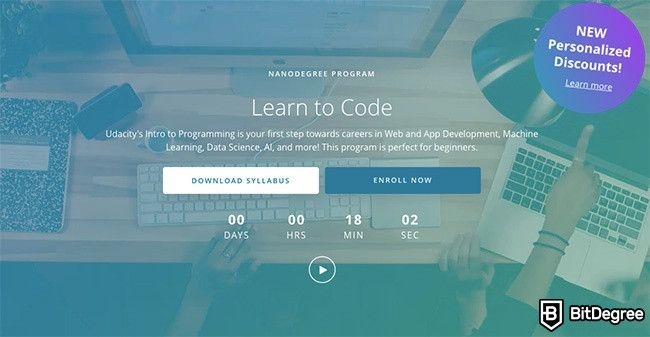
- Platform: Udacity
- Duration: 4 months (10 hours/week)
- Price: €1236
- Certificate: Yes
- Level: Beginner
- Where to apply? HERE
Programming is a very important skill to have in the digital world. Careers in IT are among the best-paid and best-hiring. It’s good to start thinking about the future ahead of time. One of the things parents can do to help kickstart their kids’ careers is helping them learn programming.
However, teaching programming on your own can be hard. There are plenty of languages to choose from, and it’s tricky to find a good starting point. Especially if you’re just figuring out this programming stuff yourself – all while figuring out how to homeschool the programmer-to-be at home.
This is where Udacity’s Introduction to Programming Nanodegree comes in. It’s a comprehensive course that will take you through the first steps of programming. It’s great for beginners, as all you really need is internet access and determination.
During this course, you’ll be learning how to code from scratch. You’ll start off learning the basics of HTML, then look into how CSS works. In the Intro to Python part of the course, you’ll learn basic problem-solving concepts. Finally, you’ll be introduced to JavaScript and how it’s used for web applications.

You won’t just be learning raw theory though – you’ll get to work on practical projects. That’s right – once you finish the course, you’ll already have something to show off in your portfolio. Not to mention it’s an exciting activity for homeschooling online.
The Intro to Programming nanodegree is estimated to take about four months to complete – that’s roughly ten hours of studying a week. However, the course is self-paced, so you can breeze through some of the content if you want and take your time with the rest.
So, if you want to know how to homeschool the leading programmer of the future generation, this course will have you covered.
This course costs €359 monthly. However, you can save 14% by paying €1236 upfront. This might seem like a lot — but you’ll get four months' worth of content. That’s essentially a whole semester of programming classes, fully covered.
You can read our full review of Udacity’s Introduction to Programming nanodegree here to learn more.
Foundations for Transforming Teaching and Learning about Native Americans (Enroll Here)

- Platform: edX
- Offered by: Smithsonian’s National Museum
- Duration: 4 weeks (1-2 hours/week)
- Price: FREE
- Certificate: Yes (paid)
- Level: Beginner
- Where to apply? HERE
One of the biggest complaints some parents have for the institutional school program is how little history it actually teaches. Minority communities in the USA have said they find the classes to be too whitewashed. They lack Black and Native American history.
In fact, Black and Indigenous communities in the US saw a significant increase in homeschooled children. They found that the switch to home teaching let their children learn more about their culture and connect with their roots.
There are many physical and digital historical sources available. However, if you’re just starting out teaching, it can be hard to pick out the best ones. Thankfully, tools for homeschooling online are already structured to help you find the starting point.
If you want to make your history classes at home more diverse, the Foundations for Transforming Teaching and Learning about Native Americans course on edX can be a great resource. This course was created by the Smithsonian’s National Museum to teach more about Native American history.
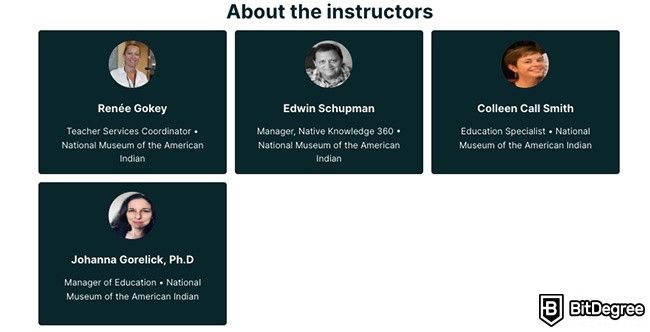
If you’re interested in museum visits becoming part of your history classes but can’t travel all the way to the Smithsonian, this course can be a good replacement for the experience. In this course, you’ll learn the history of problematic narratives surrounding Native Americans, take a look at primary and secondary sources, and explore the NK360° initiative.
This course is recommended for homeschoolers, so you can make it a seamless part of your course. With the help of tests and the edX support, it’s easy to start homeschooling online and measuring results.
The course costs €43 but once it’s yours – it’s yours forever. You’ll have unlimited access to all course materials. You’ll also be able to use the graded assignments. And here’s the most fun part – you can earn a certificate. So, you can share your new skills with the rest of the world.
24+ Hours of Piano Lessons, Homework & Tests (Enroll Here)

- Platform: Skillshare
- Offered by: Mark Piano De Heide
- Duration: Self-paced
- Price: FREE
- Certificate: No
- Level: Beginner
- Where to apply? HERE
Extracurriculars suffered a lot during the COVID-19 pandemic. Even when some schools reopened, some clubs weren’t allowed to continue everywhere. This made it harder for pupils to engage in hobbies and learn new skills. Private music lessons became difficult to access.
If the question of how to homeschool and raise an artist at the same time is relevant to you, Skillshare is the place to start. Are you concerned that your child’s musical abilities will decline while after-school programs are closed? Worry not! Skillshare offers over 3000 music courses, from playing instruments to production and sound design.
The 24+ Hours of Piano Lessons course is about as comprehensive as learning to play the instrument at home can get. In fact, it’s the most in-depth piano course on the platform. Step by step, you will go from learning the names of piano notes to working on your own compositions!

The course was created by Mark De Heide, a pianist and YouTuber. His YouTube channel, PGN Piano, has over 400 000 subscribers. He’s been sharing his piano lessons with the world for over a decade. And he’s packed all his knowledge into his Skillshare courses.
This course is completely self-paced. You can spend as little or as much time as you want. Enjoy the freedom to breeze through the classes or set yourself a lesson-by-lesson schedule.
Unfortunately, learners can’t get a certificate at the end of this course. But that might not matter that much – your child will prove their skills with amazing piano performances that are sure to blow their friends and family away.
This in-depth course will bring some extra fun to your home teaching. You don’t need to be a piano pro yourself to help your child play. In fact, you might even learn along with them!
You can start taking the course for free for a 7-day trial. But with all the content it offers, it’s definitely worth going for the Skillshare Premium membership. With this plan, you can get the first month of membership free. Not to mention it’ll allow you to access any course you’ll find on the Skillshare catalog.
So, what are you waiting for? It’s time to warm up your fingers.

Did you know?
Have you ever wondered which online learning platforms are the best for your career?
Conclusions
It can be hard to figure out how to homeschool at first. But once you get the hang of things, it’s all about being consistent and working hard. Starting homeschooling has different requirements around the world, so your top priority should be to double-check the local laws.
Now that you know how to start homeschooling, it’s time to take the first steps. Look into the curriculum. Find out what your child likes learning the most and how they study best. Weigh the homeschooling pros and cons, and see how you can adapt.
Remember – you don’t have to be a know-it-all expert on every subject. You can also learn along with your child! What matters is finding the style of learning that works best for both of you.
From fully planned out English classes and structured programming courses to history you've never heard of and newly discovered musical talents. With digital courses, you can expand your knowledge and excel at your homeschooling skills.
And if you feel like you need some support — don’t worry! Check out one of the courses recommended above. Make your home teaching more engaging, and stand out as the coolest teacher in town who knows the most interesting online resources.
Scientific References
1. Sara Bubb and Mari-Ana Jones 'Learning from the COVID-19 home-schooling experience: Listening to pupils, parents/carers and teachers'
2. Ying Zhao, Yong Guo, Yu Xiao et al. 'The Effects of Online Homeschooling on Children, Parents, and Teachers of Grades 1–9 During the COVID-19 Pandemic'
3. Cynthia K. Drenovsky and Isaiah Cohen 'The Impact of Homeschooling on the Adjustment of College Students'
